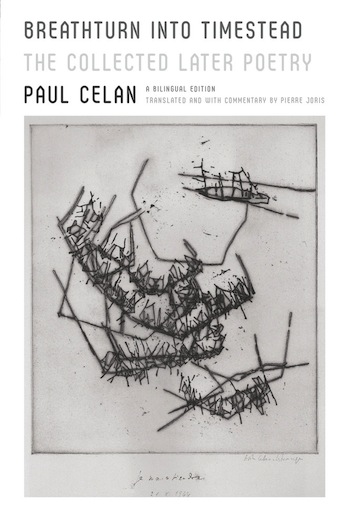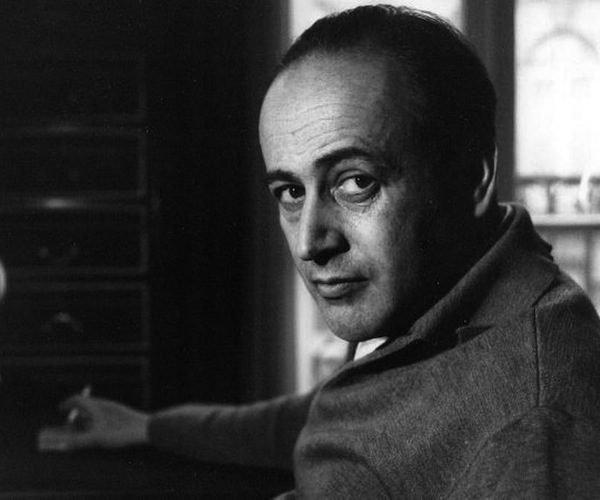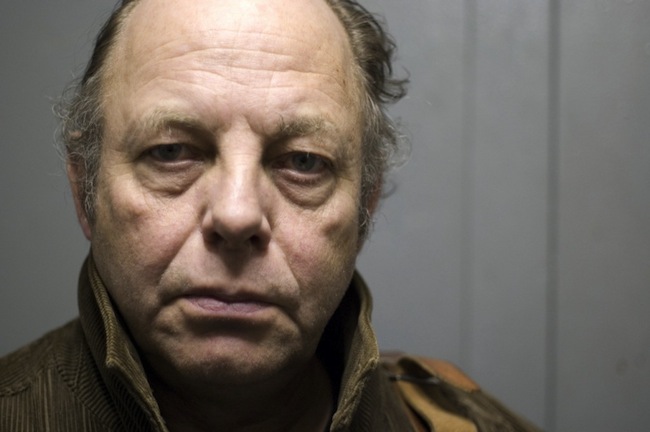Poetry Review: “Breathturn into Timestead” — A Magnificent Guide to the Enigmatic Poetry of Paul Celan
Once you have wrestled with Paul Celan, not against but along-side him in his poetry, you may find yourself with a changed and sharpened sensibility to image and language.
Breathturn into Timestead: The Collected Later Poetry by Paul Celan. Translated from the German and with Commentary by Pierre Joris. Farrar, Straus and Giroux, 736 pages, $40.
By Kai Maristed

A few days ago I was shopping in a big department store in Munich. At the cash register I set down the thick book of poetry (over 700 pages with annotations, thank you) that I’d been lugging around all morning. Quietly, almost under her breath, the clerk said, “Ach! Paul Celan.”
I looked at her. Mid-forties, buttoned-up cardigan, short curly hair. Clear pale eyes. “You know Celan?”
With a small smile, she recited from memory: Schwarze Milch der Fruehe wir trinken sie abends / wir trinken sie mittags und morgens wir trinken sie nachts… (‘Black milk of daybreak, we drink it in the evening / we drink it at noon and in the morning we drink it at night…) These are the first lines of Celan’s extraordinary poem, Todesfuge. (Death Fugue) Worked on for at least a year, published in his early collection Poppy and Memory, this ferocious, beautiful lyric challenged the famous statement by philosopher Theodor Adorno, that “to write a poem after Auschwitz is barbaric.”
Celan’s haunting fugue, rhyme-free and strongly rhythmic, set in five stanzas with the final couplet — your golden hair Margarete / your ashen hair Sulamith — extraordinary in its imagery and economy, put Adorno’s dictum in question. Todesfuge spoke the unspeakable for many of Europe’s surviving readers. To his credit, Adorno recognized Celan’s achievement and publicly stepped back from interdicting all poetry — only to pose a terrible corollary question: “Can one go on living after Auschwitz, is it completely possible, for someone who accidentally escaped and by rights should have been killed?” Did he know at the time the biographic details of Celan’s life, the specific nature of his pain and survivor-guilt?
Todesfuge traveled throughout Europe, was translated into a dozen languages, and made its previously unknown author a literary rock star at age 32. Despite the skepticism of the then dominant realist school (the influential Gruppe 47) in only a few years Celan would be giving readings in Germany to as many as 1000 listeners. (You can listen to Celan read Todesfuge) Today, German schoolchildren learn all of Todesfuge by heart. They tackle it in required essays. It’s hard-to-impossible to think of significant verse that has the same place in American education — perhaps some brief bits of Shakespeare and (how oddly) the opening lines of The Wasteland.
The enshrinement of Todesfuge in German textbooks, where it functions as a sort of national pledge of allegiance to never-forgetting, is misleading. While the Celan academic industry runs at about 90% capacity, with approximately 2000 books and articles on the man and his work published to date, almost no one today, other than the authors of dense commentaries, reads him. Ask around: Paul Celan, considered by many critics to be one of the most important poets of the post-1945 era, is one of those writers whose name rings a bell with most literate people…and there it stops. The likeliest explanation is the simplest: Celan can be–no, generally is–a challenge. That is to say, his verse is hard to make quick sense of in the way our pattern-processing, familiarity-seeking minds find satisfying. Poet John Ashbery’s fey journal-like entries leave clear tracks on the carpet by comparison. Yes, Celan’s lush early poems, influenced as much by French Surrealism (Rimbaud, the art of Odilon Redon) as by Rilke and Trakl , defy easy interpretation. But it is the later work that requires the patience and faith of a hunter sitting in a blind. You have to let the poem come to you.
In his last decade Celan was composing in the service of a clearly articulated vision. If truth could ever be spoken again, language needed to be taken apart and reconstituted. In Celan’s development, one senses a movement toward abstraction similar to that of major visual artists working in the same era: Kandinsky, de Kooning, Rothko. Celan was quite taken with the Blue Rider group, of which Kandinsky was an early member.
So now the big question in the room is, is it worth one’s time to read Celan? Especially the late, hard-shelled works so frequently tarred with the word, ‘hermetic’? Absolutely. Yes. To go further: once you have wrestled with Celan, that is to say, not against but along-side him in his poetry, you may find yourself with a changed and sharpened sensibility to image and language.
Fortunately, thanks to a lifetime’s devotion to Celan’s work by poet, scholar, and translator Pierre Joris, readers who are not fluent in German can now dive deep into the poet’s complete late works. It’s a beautiful presentation of the poetry, a handsome, generous format in which Joris’s translations face the originals. His engaging preface and footnotes exploring the translator’s dilemma as well as the poems’ content and historical background are stimulating and illuminating. (These are probably the first footnotes I’ve ever been truly grateful for.)

Poet Paul Celan — If truth could ever be spoken again, language needed to be taken apart and reconstituted.
To attempt to translate the late Celan is, as Joris implies, an almost quixotic undertaking, going far beyond the usual quandaries and frustrations of the job. His discussion of individual word choices, as informed by other parts of Celan’s oeuvre, helped resolve some of my hesitations. That said, the rigorously literal approach chosen here — hewing to the original German syntax, keeping compound words conjoined when a more colloquial translation would probably separate them into adjective and noun — at times makes the English version more difficult to parse than the original German. Regarding Joris’ invaluable remarks about the poems themselves, with a bit of rearrangement they could stand as a significant volume of criticism on their own. The translator explains the significance of certain dates of composition, points out the interior connections between poems and volumes, draws attention to the symbolic significance and weight of various words in all their guises, ranging from geological formations and maritime vocabulary to Jewish scripture and culture. Joris confidently keys many of the poems to events in Celan’s life. Eyewitness comments by friends and Celan himself help us see the man.
In other words, Breathturn into Timestead is a bargain. Snap it up.
Both Celan and his poetry were shaped by an historical crucible. Paul Pessach Antschel (Celan is an anagram of that name) was born in Czernovitz, (then Romania, now Ukraine) on January 20th, 1920. The date of January 20th would always carry deep significance for him. That was the day on which the title character in Georg Buchner’s Lenz‘s departed for the winter mountains. It was also on January 20th that the Wannsee Conference sealed Germany’s plans for extermination of the Jews.
Although Czernovitz was Austro-Hungarian polyglot, Paul grew up speaking high German at home, mainly due to the influence of his literature-loving mother. Sent by his Zionist father to three years in Hebrew school, he resumed the mainstream path toward a career in medicine, as his parents wished. He studied in France in 1938 — he traveled by train through Berlin the night after Kristallnacht — but he soon returned home to take up studies in literature.
In 1941 the Nazis gave Czernovitz its first ghetto. The deportations began. Paul found a night-hideout with friends, but his parents declined to join him. One morning in June he returned home to find them gone. Later, himself in a labor camp, he heard that his father had died and his mother had been shot. Then and for the rest of his life he experienced and expressed terrible feelings of guilt.
In February ’44 the Red Army liberated his camp. After brief stays in the USSR and Bucharest, and an attempt to find footing in Vienna, where he began a long on-and-off affair with the writer Ingeborg Bachman, Celan moved to Paris. There he would spend the rest of his life, supporting himself mainly as a translator, notably of Shakespeare. He became a German-language writer in self-exile, who had never lived for a long period of time in a German-speaking place. But his decision to write in German was made early on. As he wrote to a friend, “Only in the mother tongue can one speak one’s own truth, in a foreign language the poet lies.”
In 1952 he married the artist Giselle Lestrange, against the wishes of her aristocratic family. (For all the intensity of the marriage, Celan continued a very secret liaison with his mistress, the Austrian Brigitta Eisenreich. In a memoir published in 2010, Brigitta wondered whether Celan, “the love of her life,” had in part stayed with her for the sake of being able to speak German.)
The second fateful event in Celan’s life was ‘the Goll Affair.’ Entire books have been written about this Machiavellian, entirely false accusation of plagiarism by the widow of one of Celan’s close friends. The literary world, quick to enjoy a scandal and a colleague’s downfall, turned away from him. Celan was mocked and reviled in major newspapers. He never completely recovered from this experience of betrayal and a renewed sense of persecution.
The years 1958-1960 mark a sort of caesura in Celan’s work. In 1960, with his reputation finally cleared, Celan was awarded Germany’s highest literary honor, the Buchnerpreis. In his acceptance speech he indicated the directions his poetry would take from then on, an approach based on the idea of an Antiword, that is, the Contrary, the unexpected, true response. “Poetry: that can mean an Atemwende, a breathturn.” The lines would shrink, the verses become more vertical than horizontal. Purified. Single and compound words would carry enormous weight.

Pierre Joris — He admits that translating the late poetry of Celan is an almost quixotic undertaking. Photo: Nicole Peyrafitte.
During the next ten years he wrote prolifically, often turning out a poem a day. It’s this output, originally published in multiple volumes, that is collected in Breathturn…. He traveled, e.g. to Jerusalem and Berlin. But he battled at the same time with depression and was hospitalized repeatedly. Attempting suicide with a letter-opener, he grazed his lung. After his paranoia threatened his family he agreed, reluctantly, to a separation.
Paul Celan took his own life during the night of April 19th, 1970 by diving into the Seine from the Pont Mirabeau near his apartment.
I hear the place is unnamable, I hear the bread that looks at him
heals the hanged man
the bread the woman baked for him, I hear they call life
the only shelter.
Though he bore stark witness, Celan vehemently and rightly rejected the label ‘poet of the Shoah.’ His curiosity, humor, tenderness, and outrage ranged freely. He was keenly tuned to the current political scene, as the verses written after the near-assassination of Rudi Dutschke show, and it is mostly in this vein that one sees the glint of Celan’s teeth, a biting sarcasm. In a very different mode, the poems addressed to his son Eric are proud and hope-filled. And many of the late poems are intimate, loving, and erotic.
Truth was his grail. After he had honed his craft he set out to destroy it, including his earlier, more lyrical works, negated in poems he called “Widerrufe.” (Recalls) The bare word, by necessity a new, often strange word, was the only way to truth. Celan demanded a “radical putting-in-question of Art.” In the Buchner speech he expressed his hope that, ‘Perhaps the poem can now, in the art-less, art-free manner, walk its other routes, thus also the routes of art — time and again?’
above the grayblack wastes.
A tree-high thought
grasps the light-tone: there are
still songs to sing beyond
mankind.
Kai Maristed studied political philosophy in Germany, and now lives in Paris and Massachusetts. She has reviewed for the Los Angeles Times, the New York Times, and other publications. Her books include the short story collection Belong to Me, and Broken Ground, a novel.
Tagged: Breathturn into Timestead: The Collected Later Poetry, German poetry, Kai Maristed, Paul Celan

That “black milk” has to be among the top ten most memorable images of the century.